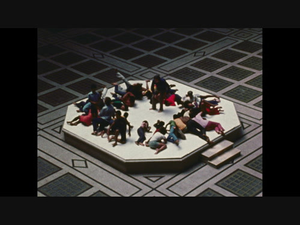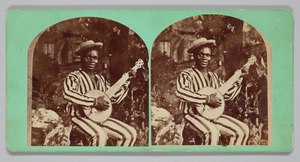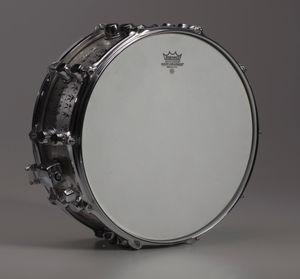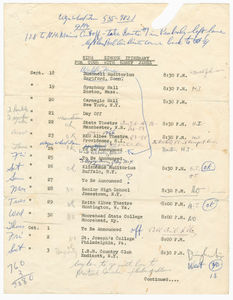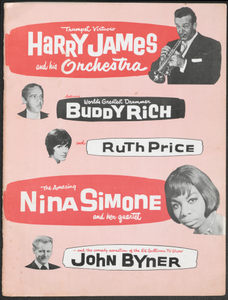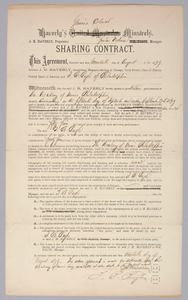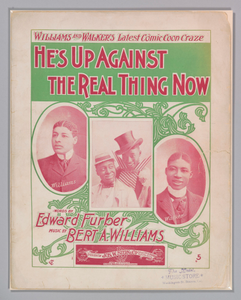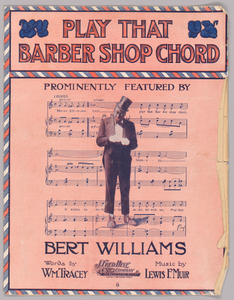Description
Charles P. Stinson’s minstrel credits include working with Callinder's Georgia Minstrels, the World's Minstrels, and Harvey and Frohman's Minstrel Companies as a banjo player, actor, and drum major. He made his name through banjo competitions though, notably in an 1888 competition in Kansas City when he beat eleven white competitors to become the first known African American to win such a competition in a southern state.After touring through the 1880s, Stinson returned to Pittsburgh and set up a studio teaching amateur musicians. He taught parlor music to his middle-class students eager to join banjo, mandolin, and guitar orchestras playing arrangements of popular songs. Through his role as a teacher, Stinson also sold student-level banjos to his students. This banjo likely made by J.H. Buckbee in New York was the result of a collaboration between Stinson and Buckbee to create banjos for Stinson to assemble and distribute to his students; a common arrangement in the late nineteenth century as the instrument became popular.An open-back five-string banjo created for Charles P. Stinson. Four tuning pegs made from molded resin are attached to the peghead. The tuning pegs are decorated with seven curving lines carved on each side and a decorative ridge. Another tuning peg appears halfway up banjo's neck. The frets on the neck are inlaid with mother of pearl. Several of the frets are missing as well as the bridge of the banjo. Some of these pieces can be found in the banjo’s case (2018.83.2). The bottom of the neck near...
Wood, Metal, Calfskin, Resin, Mother Of Pearl
Collection of the Smithsonian National Museum of African American History and Culture, Gift of the Clark and Sarah Case Family





